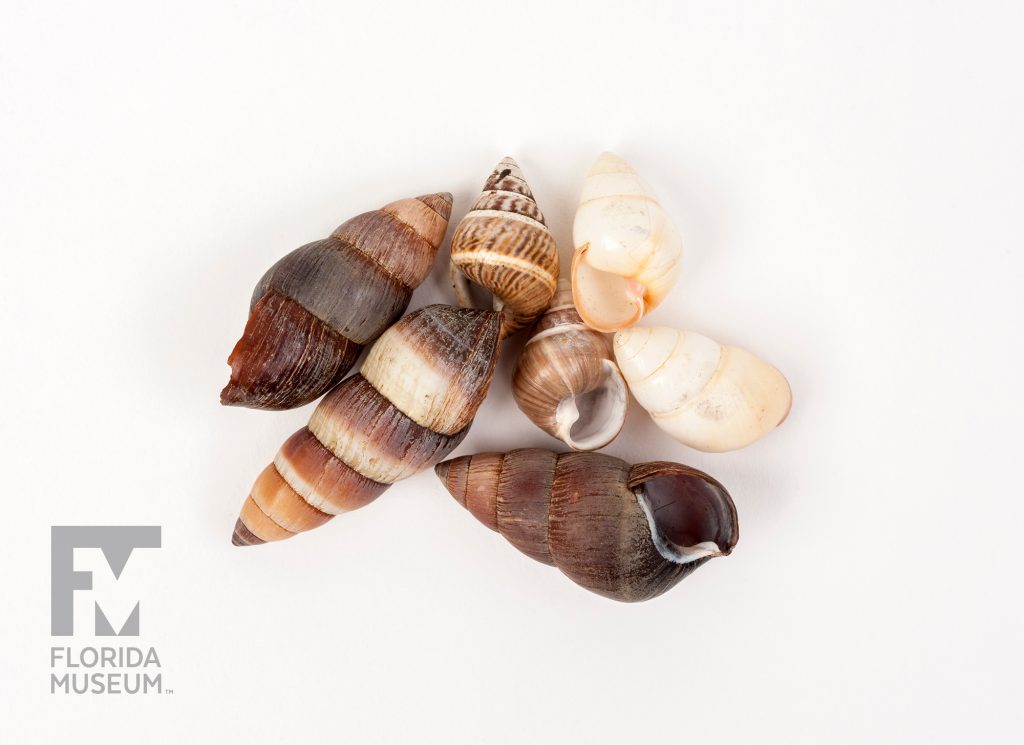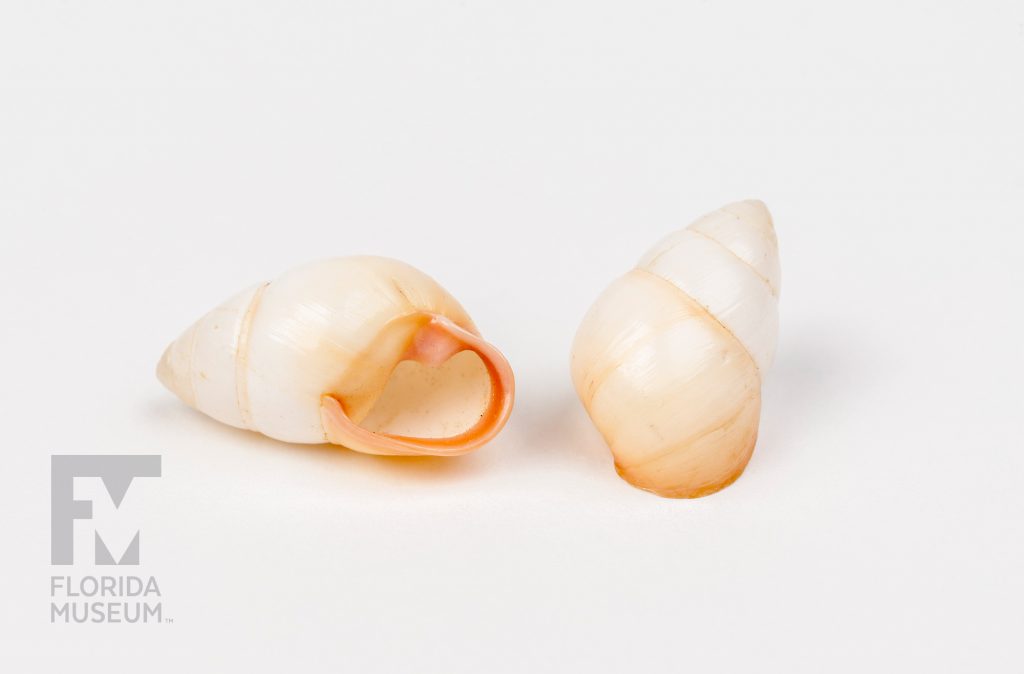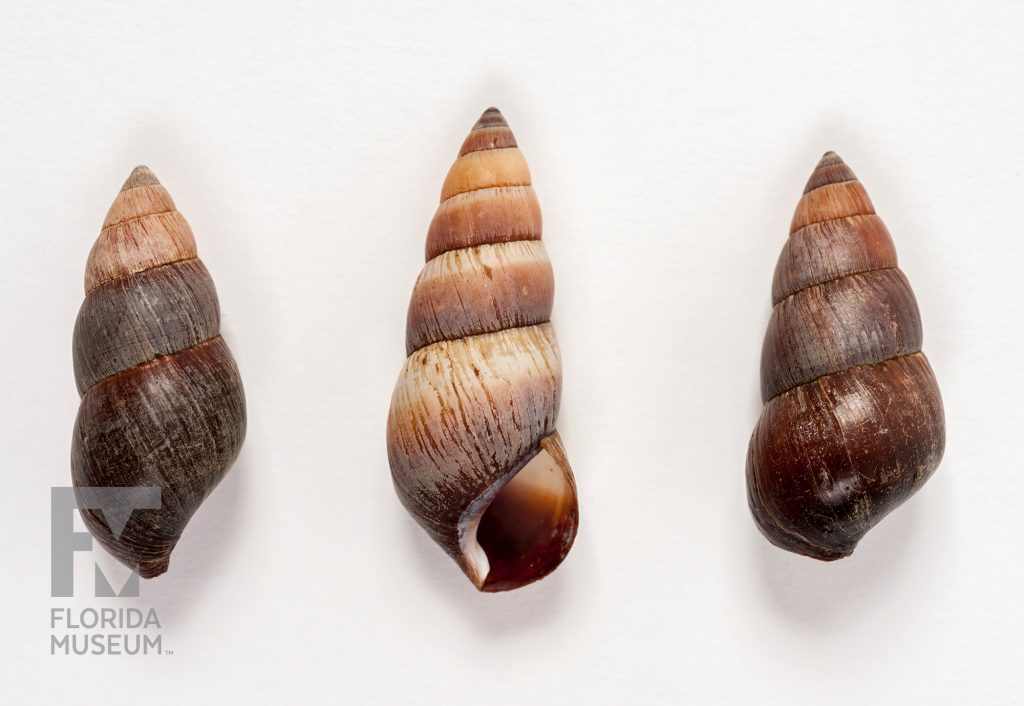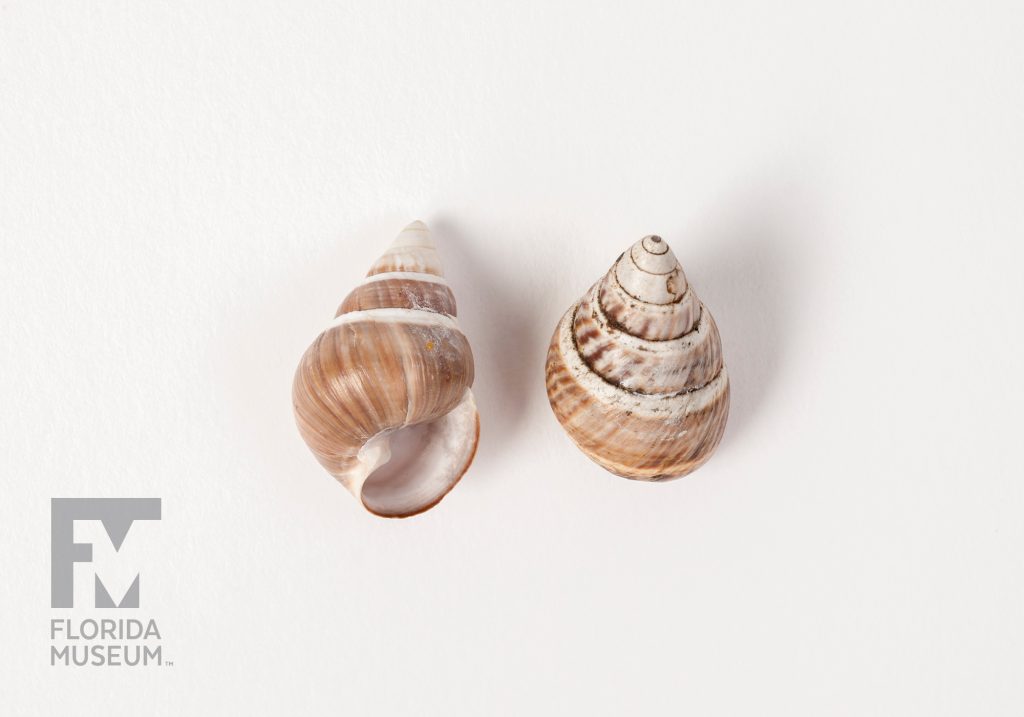The Hawaiian Islands once had over 800 different types of snails. Scientists estimate that nearly half have been lost to extinction in recent history, due to predation by introduced species and habitat loss.
Summary
Hawaiian Snails
Carelia bicolor, Achatinella vittata, and Achatinella rosea
From Hawaiian Islands, 1800s
Collection
Story
Half of all extinctions in the past 500 years have been mollusks, especially freshwater clams and land snails. One of the hardest-hit groups are the land snails of the Pacific islands, especially the Hawaiian Islands. Relatively few colonists reached the isolated Hawaiian Islands; in the relative absence of competitors and predators these snails proliferated, forming one of the most diverse land snail faunas of the world. Hawaii had about the same number of snail species as all of North America north of Mexico, but in a much smaller area. Each island, and in many cases each mountain range within each island, had its own snail species.
The land snail genus Carelia included the largest of all Hawaiian species, some reaching 3 inches in length. They were part of a family of snails that were found only in Hawaii and numbered more than 300 species. Of those, only 15 can still be found alive today and most of those are in imminent danger of extinction.
Members of the genus Carelia lived on the ground in the two oldest of the main Hawaiian Islands, the islands of Kauai and Niihau, and the last Carelia species was seen in the middle of the last century. The reasons for its extinction are not well-known, but probably included habitat loss and the introduction of predatory species like rats.
More recently, the ill-fated introduction of the predatory Rosy Wolf Snail from Florida to control an agricultural pest in Hawaii, the Giant African Snail, led to the extinction of many of Hawaii’s snails. Among those lost were many of the famous singing snails of Oahu in the genus Achatinella.
John Slapcinsky
Collection Manager, Invertebrate Zoology*
Florida Museum of Natural History
Exhibit
On display Sept. 23, 2017-Jan. 7, 2018, Rare, Beautiful & Fascinating: 100 Years @FloridaMuseum celebrated the Museum’s rich history. Each Museum collection was asked to contribute its most interesting items and share the stories that make them special. Though the physical exhibit is closed, this companion website remains online, providing an opportunity to experience the Florida Museum’s most treasured specimens.
Exhibit Area: Extinction
Theme: Lost Biodiversity
 Want to see more? Explore more than 300 breathtaking color photos of plants, animals, fossils and cultural heritage materials from the Florida Museum of Natural History’s collections in the award-winning book All Things Beautiful available from the University Press of Florida.
Want to see more? Explore more than 300 breathtaking color photos of plants, animals, fossils and cultural heritage materials from the Florida Museum of Natural History’s collections in the award-winning book All Things Beautiful available from the University Press of Florida.
*This title was accurate at the time the exhibit was on display in 2017. Please visit the collection website to verify current staff and student information.



